The progression of digitizing cultural heritage acts as an efficient
mechanism for ensuring the long-term preservation of information and
knowledge on cultural heritage while making it more accessible to
anyone of interest. With even more data stored in digital archives,
it is imperative to investigate new cultural heritage information
visualization methods, to allow researchers, to create relationships
or illustrations with information, for further analysis.
The COCE
presents a method for creating and editing user generated, concept
maps to visualize information and the relationships between them.
User evaluations suggested that there is a great potential for a
concept map creation tool, given the prototype is further refined
and more advanced features are introduced.
This study aims to answer the following research question:
What is the experience of users when using an integrated concept
mapping and complex object creation tool to create and edit
complex digital objects?
The purpose of COCE is to investigate the design, implementation and feasibility of creating,
editing and storing user created concept maps.
As its name suggests, COCE handles the creation and editing of
complex objects, a complex object consists of a map with nodes
storing digital content and the relationships (or edges) between
them.
Design and Implementation
The COCE was implemented using a Model View Controller (MVC)
architecture. The View displays a basic user interface for a user to
interact with, the model stores the data collected by the system in
a noSQL MongoDB database, and the controller acts as a midpoint to
allow interaction of the model and view, through a flask framework.
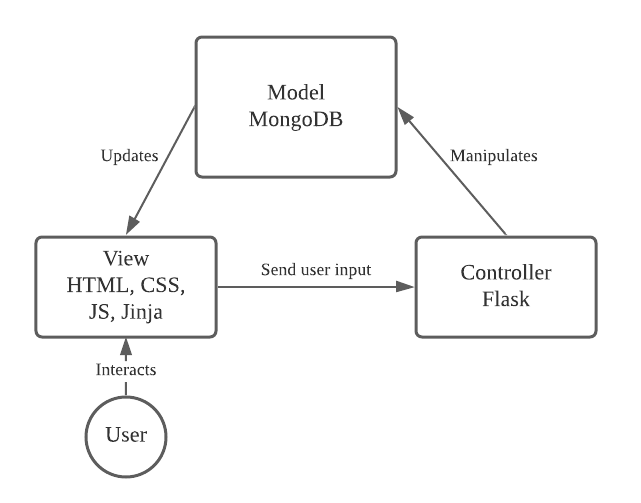
Components of COCE
Flask Framework
Flask is a python microweb framework that help build easier,
scalable, efficient, and maintainable web applications by providing
extensions and reusable code for repeated operations. Flask
extensions used in COCE include Flask-Login and Flask-PyMongo.
Authentication
A login system enables confidentiality by allowing users to register
for an account before using the system so that the maps they create
are kept private. It uses Flask-Login, a Flask extension that
facilitates user authentication. A simple cryptographic hash
algorithm, called SHA256, was used to secure passwords saved from
the user, which are then stored in the database.
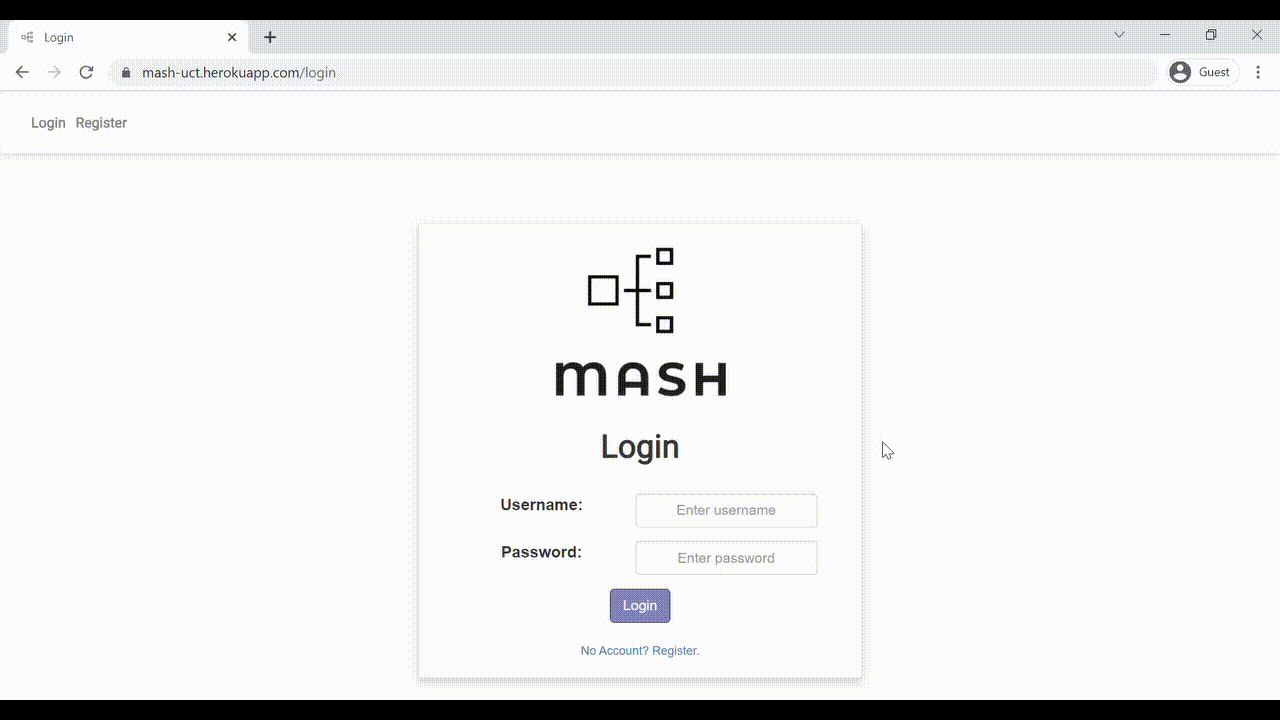
Dashboard
The dashboard is the home screen that a user sees once logged in. It shows a
list of concept maps created by a user and a description for each.
Once an item is clicked on, an options menu pops up, allowing a user
to either View, Download or Edit a map.
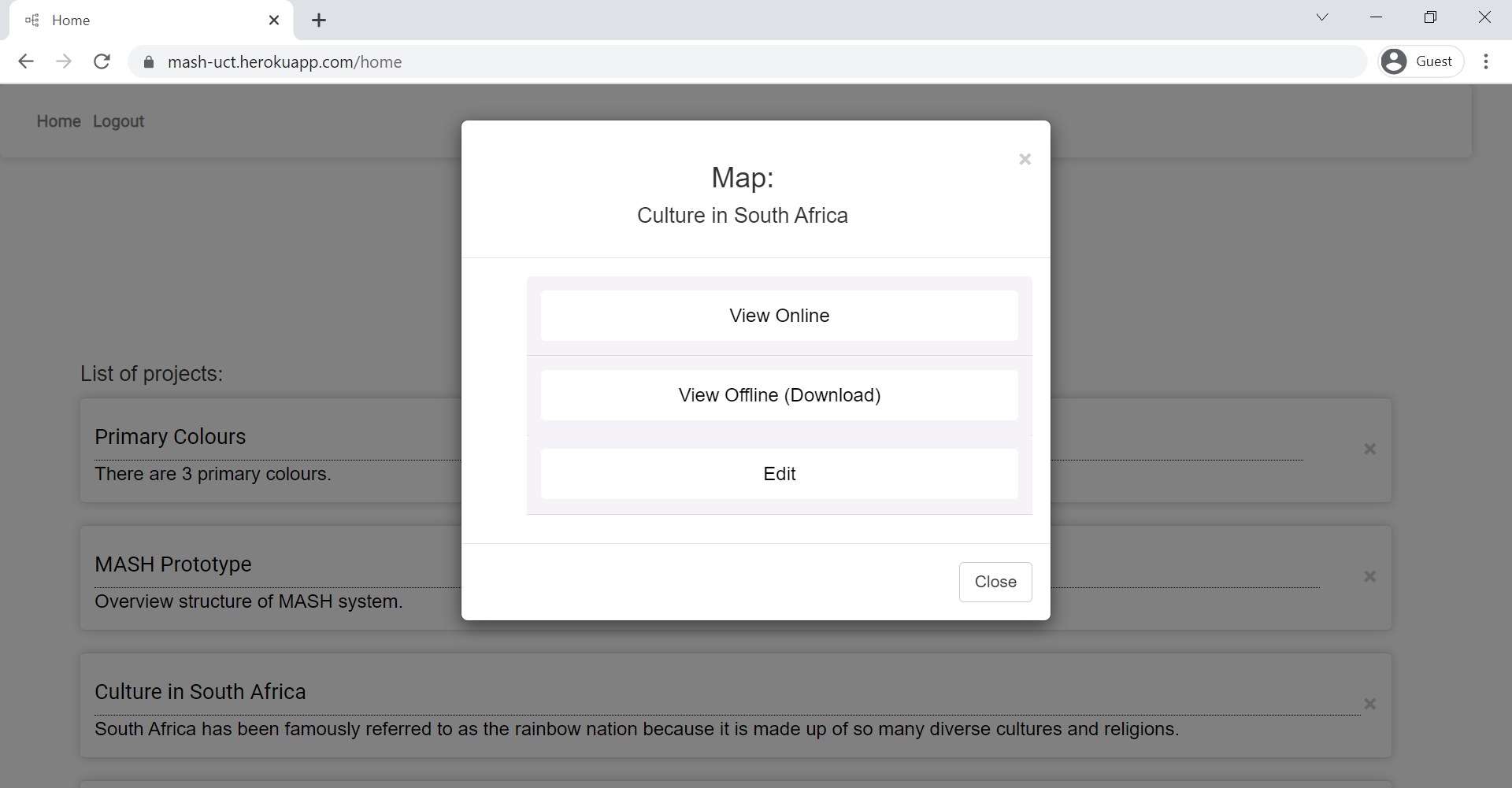
Creating and Editing Concept Maps
Vis.js is a JavaScript, dynamic browser-based visualization library.
It is responsible for map creation and manipulation. COCE
specifically uses the Network component of vis.js, to input and
render information of nodes and edges, and the DataSet component,
to store data in a JSON format. Together these results in a network
with relationships, which can be used for visualization.
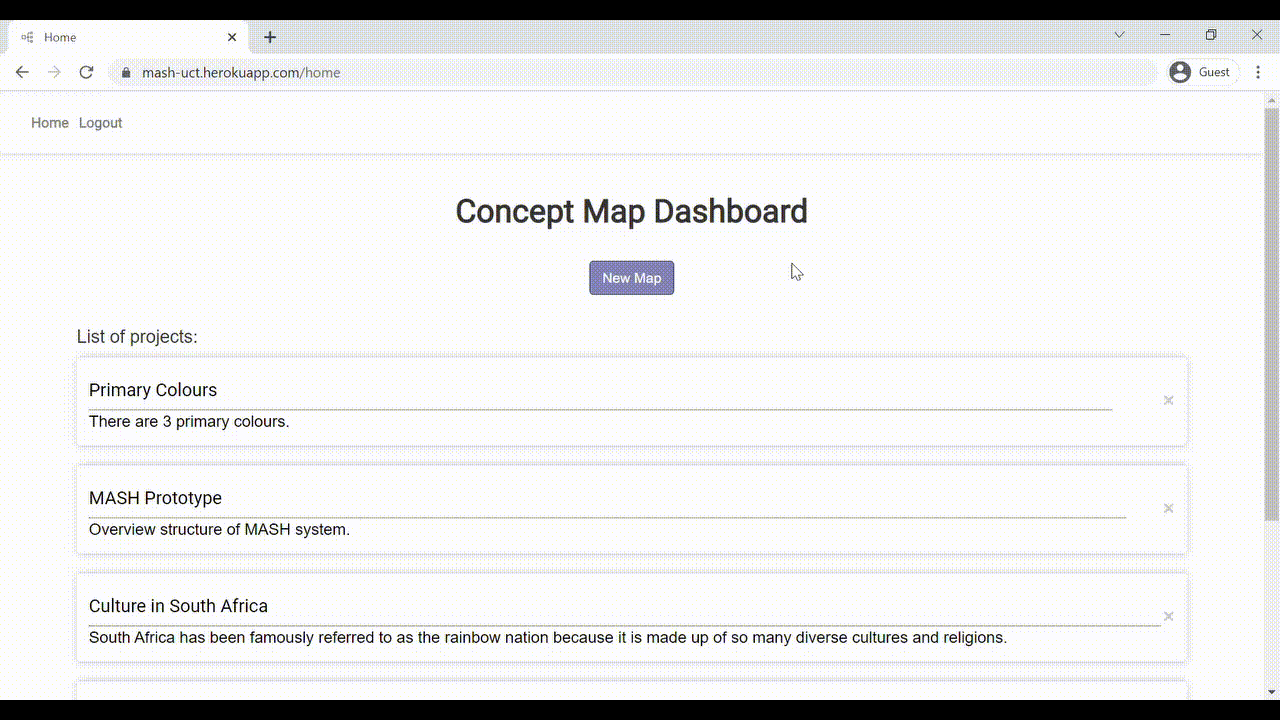
MongoDB
A scheme-less NoSQL database stores data in unstructured key-value
pair JSON documents. Each map can contain multiple nodes and edges
specified by the user. MongoDB supports the unpredictable structure
of data that comes from user-generated maps. The systems database
consists of two collections of documents; user collection and map
collection. The structure of a single map document is depicted in
the figure below. PyMongo is the MongoDB driver for python; it is a
library that enables the interaction between MongoDB and Python.
The database was hosted on MongoDB Atlas, which is a cloud database
created by the same developers of MongoDB to manage the database on
a cloud server specified by its user; we used AWS cloud service provider
for database deployment.
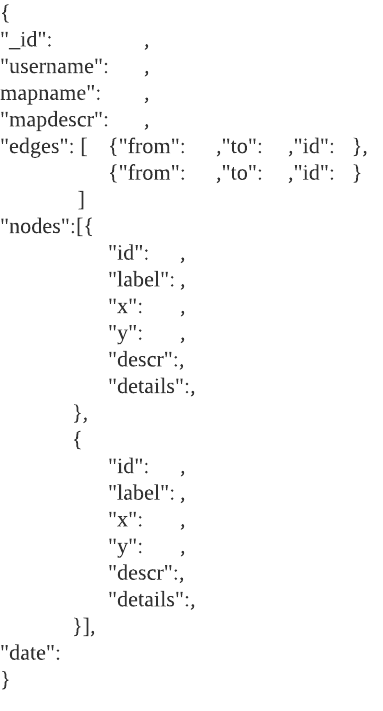
Ease of learning scored the highest ratings, with an average of 4.55 across all
its items, with Ease of use following close behind with an average of 4.21.
These ratings reflect in users' feedback, where they commended the
simplicity of features and their ability to grasp how to accomplish
tasks quickly. The satisfaction ratings had the lowest average, of 3.56, from
the four categories. The design of COCE was simple enough to perform
required tasks easily, however it also lessened the engagement and
enthusiasm when using the application, resulting in a low
satisfaction rating.
Overall, ratings suggest that the users were pleased with COCE.
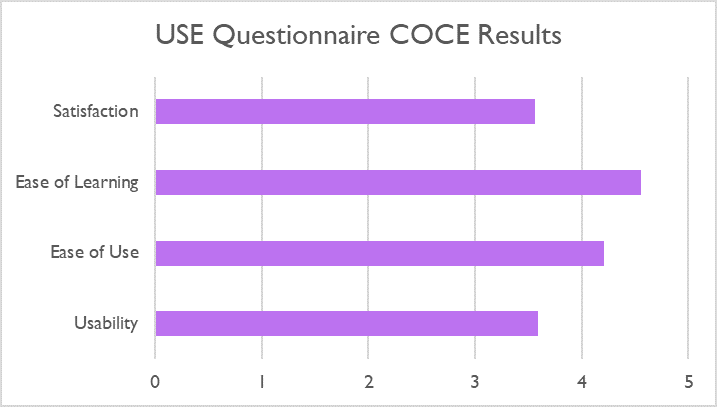
Conclusions and Future Work
Results suggest that the concept is promising and that users are
interested in this tool and its future potential.
This general experimental system can be taken a step further and made
into a specialized concept mapping tool that can be used by
different specializations dealing with large amounts of data and
who are interested in categorizing
and condensing the information they see into concept maps.
With the direction of professionals from various fields, this simple concept mapping tool
can be modified, with advanced features, such as linking maps or archive dumping, to create a specialized
concept map creation tool that can be used in different academic niches.





